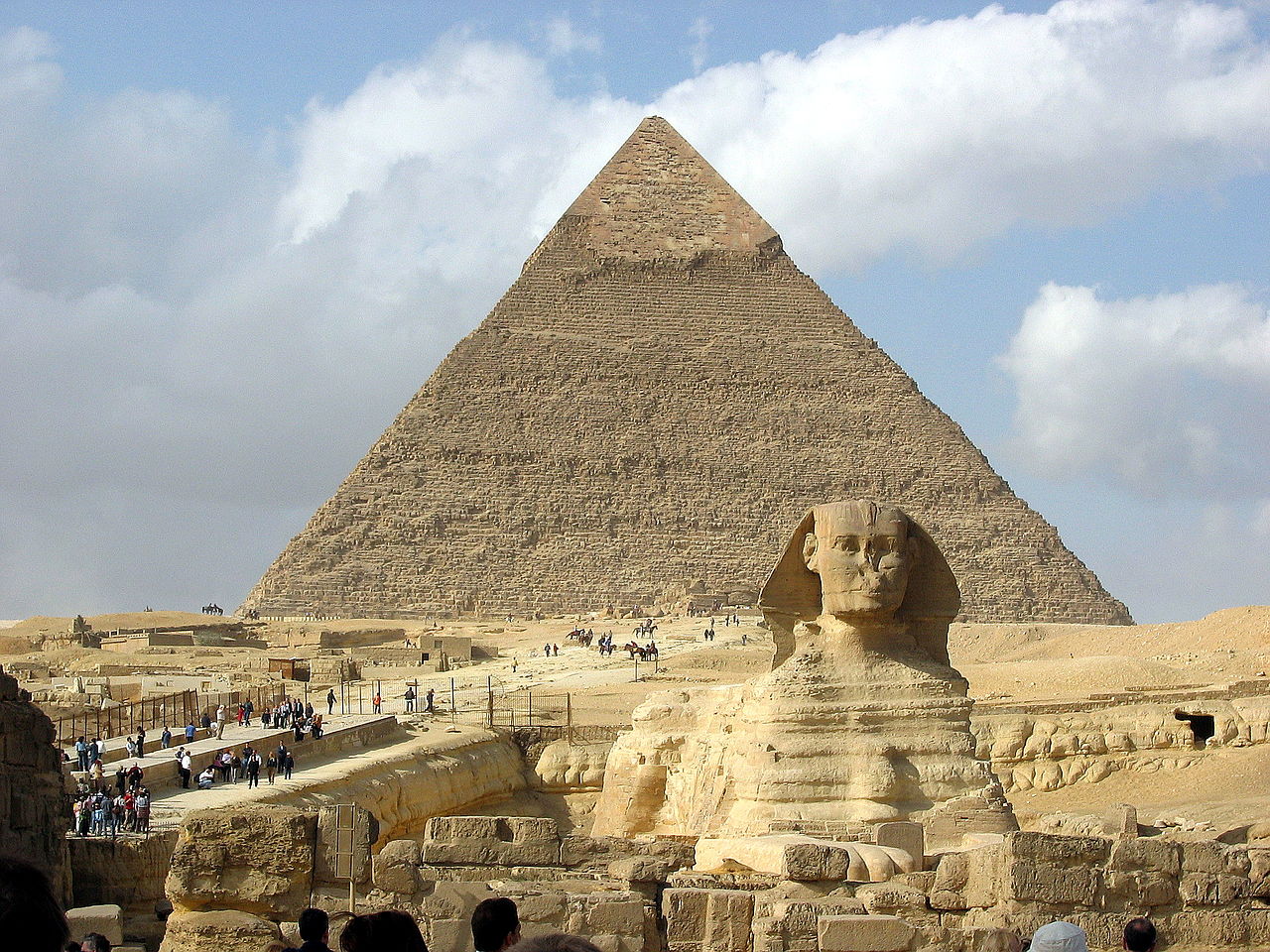
Have you ever wondered what the ancient Egyptians were like? Yours was one of the most important civilizations of antiquity, along with the Mesopotamian, the Greek and the Roman. It is precisely this development that they achieved has allowed us to bequeathed numerous artworks that provide us with extensive information about what their daily life was like.
Thanks to her, we have knowledge of their customs, their religion, their way of governing themselves, the composition of their society and even the fashions that the wealthiest classes followed. If you want to know what the ancient Egyptians were like, we encourage you to continue reading.
How the ancient Egyptians lived
Ancient Egyptian civilization lasted almost thirty centuries. It began to develop around the middle channel of the Nile river Towards the year 3.100 BC and it was extinguished as such around the 31 after Christ, when it was absorbed into the Roman Empire. In so long, they created a culture that still amazes us today with its level of development. Let's see its main aspects.
What the ancient Egyptians were like: physical appearance
Logically, throughout thirty centuries, the physical appearance of the Egyptians changed a lot. But, if we have to trust the pictorial representations they bequeathed to us, perhaps idealized on the other hand, we can reach some conclusions.
Thus, we could divide the inhabitants of the riverbed of the Nile into two large groups. On the one hand, members of the privileged classes were tall and slender, with oval faces, a sloping forehead, and a long, straight nose. They used to shave their heads to wear straight black wigs on which was a ceremonial headdress.
On the other hand, the members of the less well-off classes were shorter and with a stronger complexion. They had a flattened nose and curly but natural hair, as they could not afford to buy wigs.
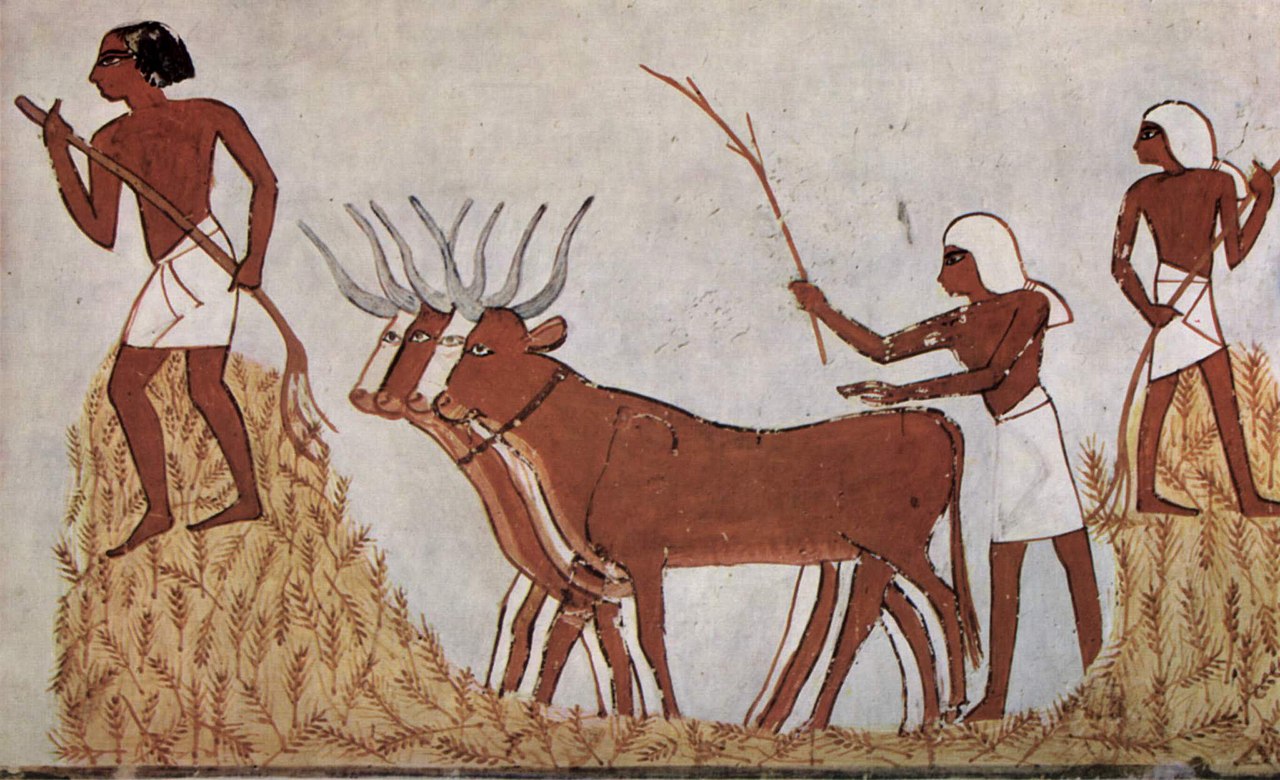
Harvesting the Harvest in Ancient Egypt
On the other hand, life expectancy in Ancient Egypt was around forty years on average. But, as you can imagine, upper-class people lived much longer than others, subjected to the toughest and most thankless jobs.
Common diseases on the banks of the Nile were by then the scurvy and tuberculosis, which at that time were deadly and decimated the population.
Family, social life and government
As it happens to us, the family was the most valuable thing for the Egyptians. Marriage was considered the ideal state of the person and the arrival of a new child was very celebrated, although later they will be educated within the possibilities of each one. The children of humble classes used to learn the office of his parents, while girls were relegated to homework. Instead, upper-class children were educated first by slaves and, later, in a sort of schools where they learned to read and write, religion and arithmetic. The latter were called Houses of Life.
On the other hand, the ancient Egyptians they married very young, with just fifteen years of them and with about twelve of them. Of course, it was logical considering his short life expectancy.
As for social life, there were very popular games like senet, which is considered one of the precedents of current backgammon. But they also liked sports. In fact, they are considered inventors of the balloon. Furthermore, they were skilled at fight, carreers, rowing and archery. They even practiced something like boxing.
It will be more curious to know that the favorite drink of the Egyptians was Beer and that they also had various kinds of it. The most valued was what they called seremet, although it was only available to a privileged few. They also consumed wine in abundance and, in terms of food, they liked both meat and fish and greatly appreciated products such as oil, miel, fruits and confectionery.
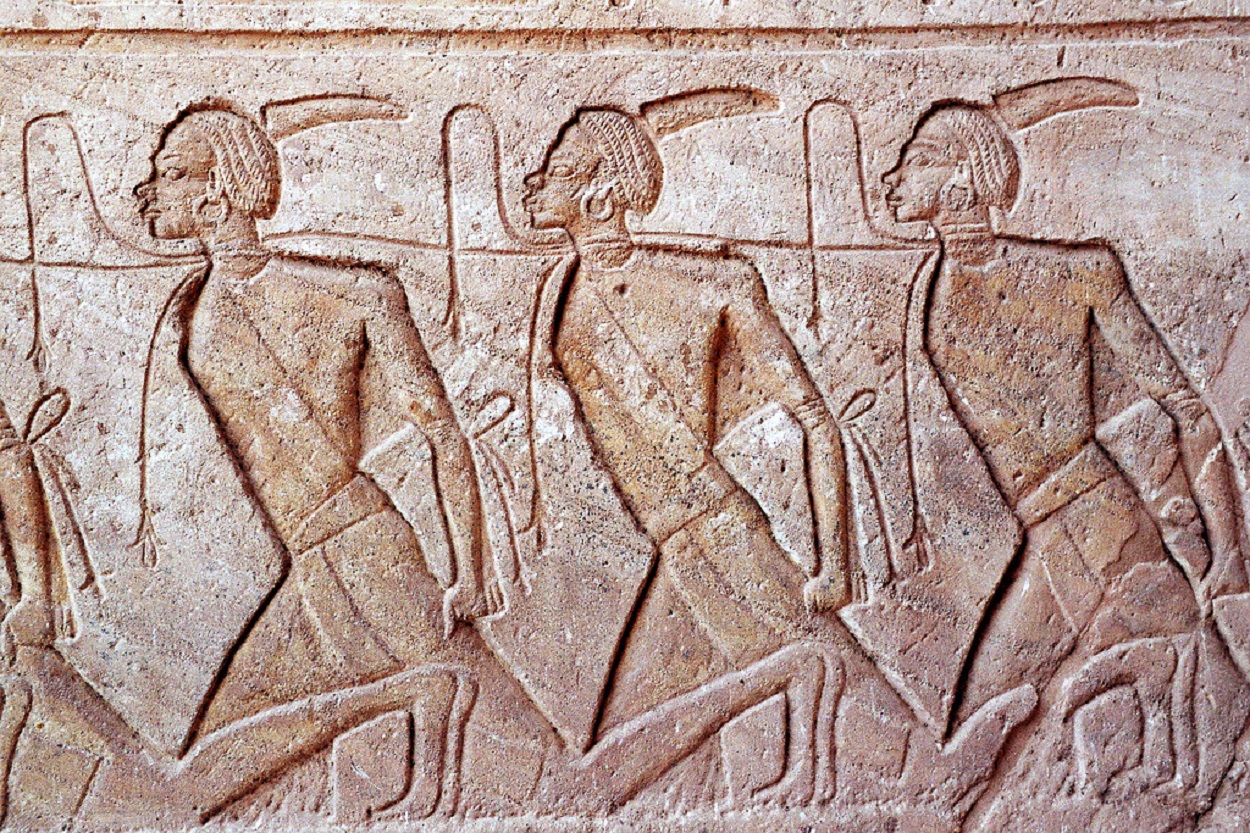
Representation of some Nubian slaves
La property of a Middle Egyptian it was modest, with adobe walls painted white. They used to have a single floor and they measured between forty and one hundred and twenty square meters according to the wealth of the family that inhabited it. They had small windows and five to ten people lived in them.
However, the Egyptians they held hygiene in high regard. In fact, they are considered inventors of the toothbrush and also, according to some sources, of the Cosmetics. In large part, this was because they also granted a lot of importance to aesthetics.
The political organization had an indisputable head: the Pharaoh, to which divine properties were attributed. Then there were the top state officials, called scribes, and the priests. Then came the plain town, which was mainly dedicated to crafts and agriculture.
Finally, there were the slaves that they also had certain rights. Legally, their owners had to provide them with food and lodging, but also clothes and other products. They could even buy land and obtain money, something unthinkable for the slaves of other contemporary empires.
How were the ancient Egyptians: religion and ceremonies
Religion in Ancient Egypt was always polytheistic. Only the pharaoh Amenhotep IV was allowed to leave only one god: Aten (one of the invocations of Ra) and declared himself an intermediary between him and men. However his son, the famous TutankhamunHe returned to polytheism, more under the influence of the priests who had lost power than on his own initiative.
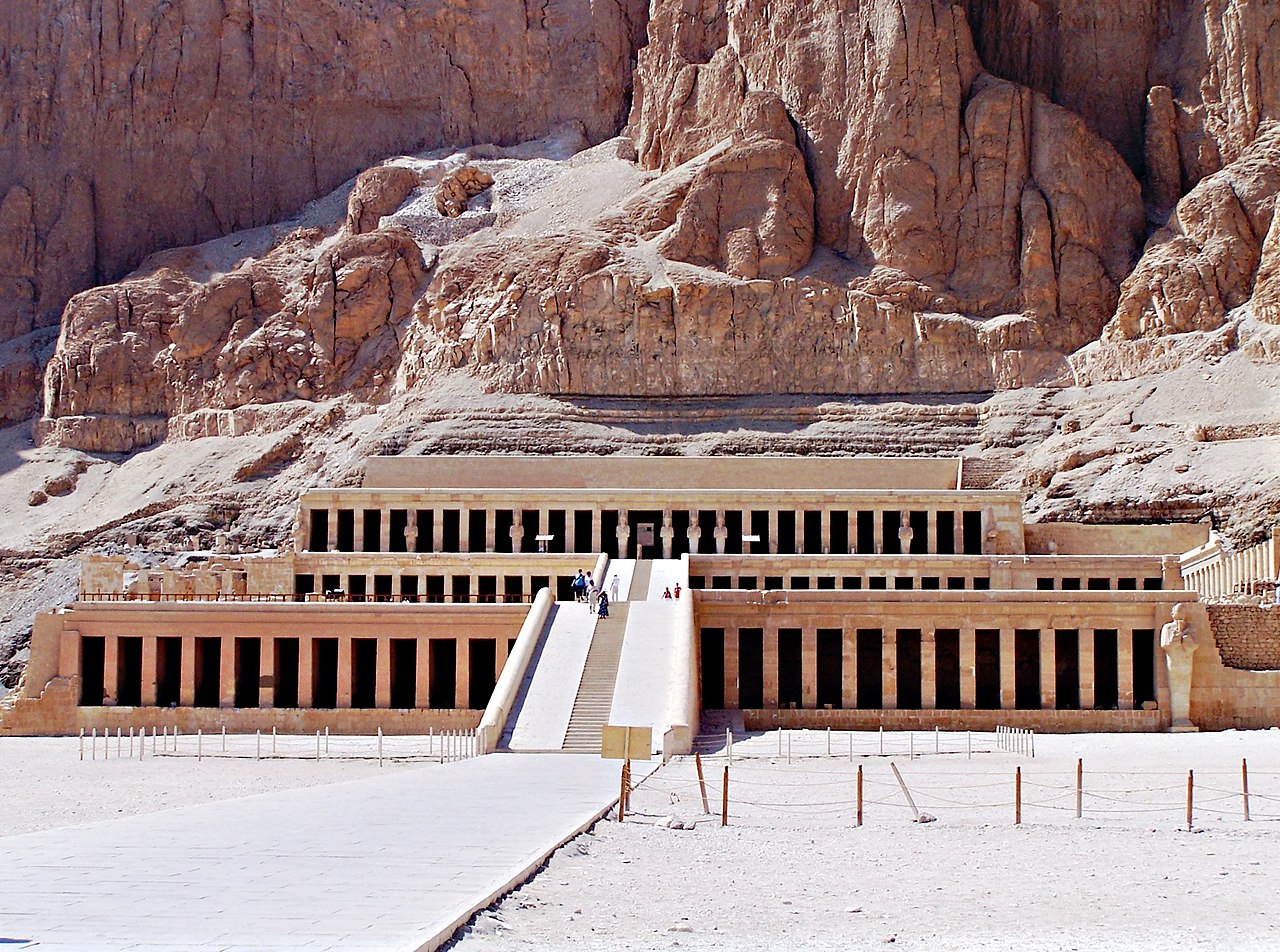
Hatshepsut Temple
The gods were represented with features anthropomorphic, although in some cases they were added animal heads which generally alluded to his powers. For example, Horus He was represented with the head of a hawk, Anubis of dog, Sobek crocodile and Seth with one similar to that of a wolf. Precisely the latter, Aten or Ra, Shu, Geb, Tecnut, Nephthis, Osiris and Isis, made up the Ennead of Heliopolis, one of the most important groups of divinities.
Regarding religious ceremonies, probably no people had as many as the Egyptians. They not only chose as objects of worship numerous animals, but even plants.
To celebrate and pay tribute to their gods, they celebrated various festivals. Perhaps the most solemn was the call Feast of the Lamentations of Isis, which was devoted to mourning and took place in the month of November. Likewise, with the winter solstice the Search for Osiris. This was one of the gods most honored by the Egyptians, since they also celebrated the Osiris reappearance, his death or Feast of the Seeds and his resurrection.
Isis also received several recognitions at the end of the year. A good example of them was the Iseas or feast of the Purification of Isis, which took place in winter. In short, other religious ceremonies of that society were the Beautiful Festival of the Valley, of a funerary nature and in which the pharaoh's family participated; Laginoforia, a set of festivities associated with wine and that owe their name to the lágino, container where that drink was transported, and the oppet party, which reaffirmed the ties between Amun-Re and Pharaoh himself.
The science
The ancient Egyptians were great inventors. They are due, among others, the papyrus, candles or locks, to mention only three things of daily use. But, more deeply, they stood out for their advances in mathematics and geometry. In fact, the Greeks Herodotus and Strabo recognized that their people had inherited the latter from the Egyptians.
We do not need to tell you about the capacity they had for architecture because it is enough to see the pyramids or the temples that have been bequeathed to us to realize it. As for chemistry, it seems they were also great alchemists. It is believed that, as we told you, they were the first to create cosmetics and also to use the glass and lime mortars.
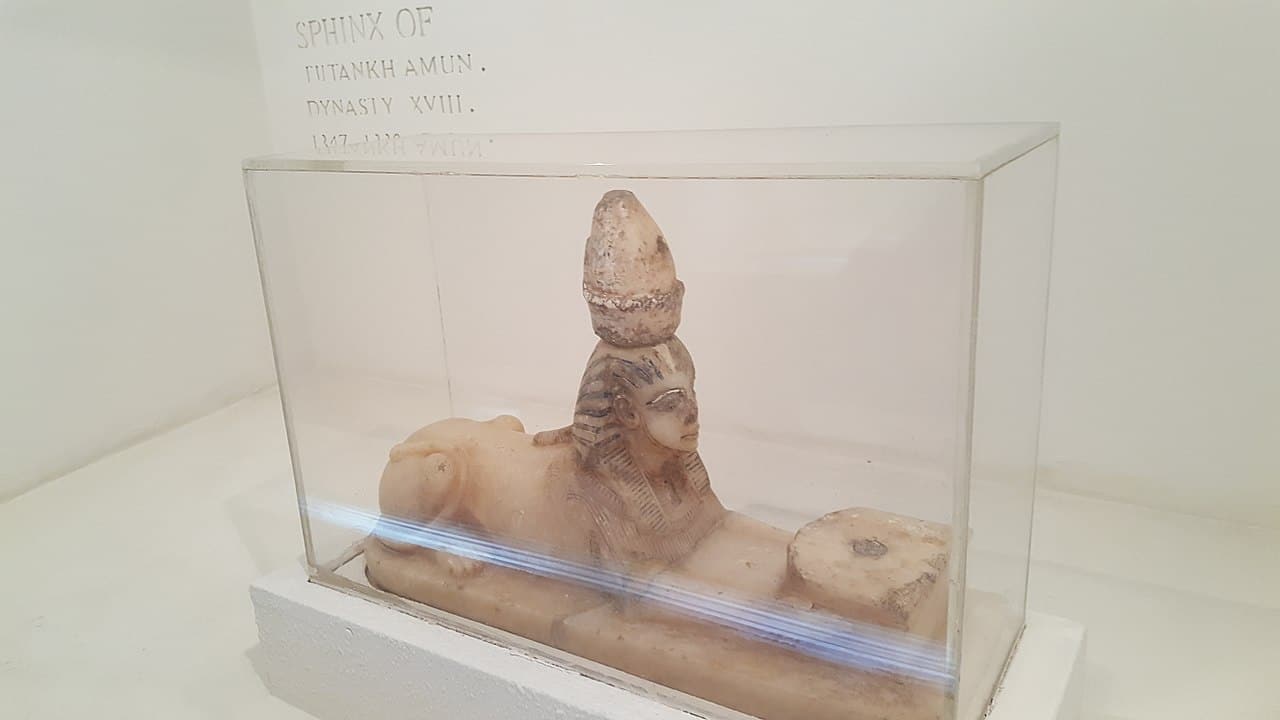
Tutankhamen
Finally, regarding medicine, they have reached us various treaties on the matter of ancient Egypt. For example, him Edwin Smith Papyrus, considered the first known surgical document (XNUMXth century BC); the one of Hearst, which is a practical form for doctors, or the one for lahun, on gynecology. Furthermore, Egyptian was the first known physician: hesy-ra, who lived in the year 3.000 BC.
What the ancient Egyptians were like: art
It is precisely to art that we owe much of what we know about ancient Egypt. Thanks to his lavishness in painting and sculpture, we have received valuable information about his life and customs. It seems they liked the polychromy and inevitable is that we talk to you about the call egyptian profile.
Actually, this curious way of portraying creatures is due to a representative concept called "Aspective" and whose primary reason for being was magic idea that that town had of art. In other words, the figures represented were likely to be revered and consequently some parts were facing forward while others were sideways to be acceptably seen from all sides.
In conclusion, if you were wondering what the ancient Egyptians were like, you should know that they built one of the most advanced civilizations of its time. Although, as almost always happens with developed societies, it would end up subject to others on the rise such as The greek and the Roman at that time.